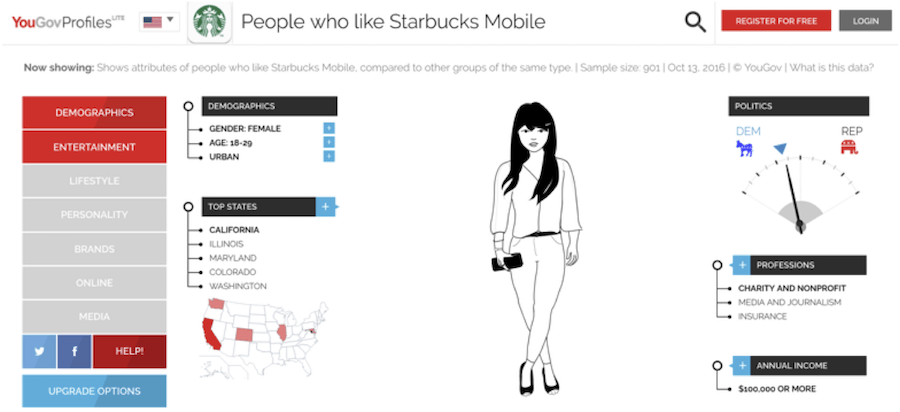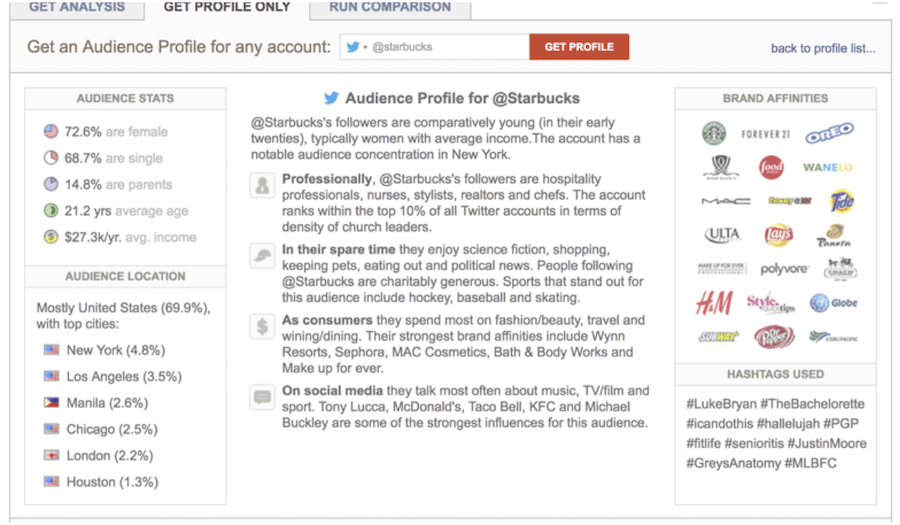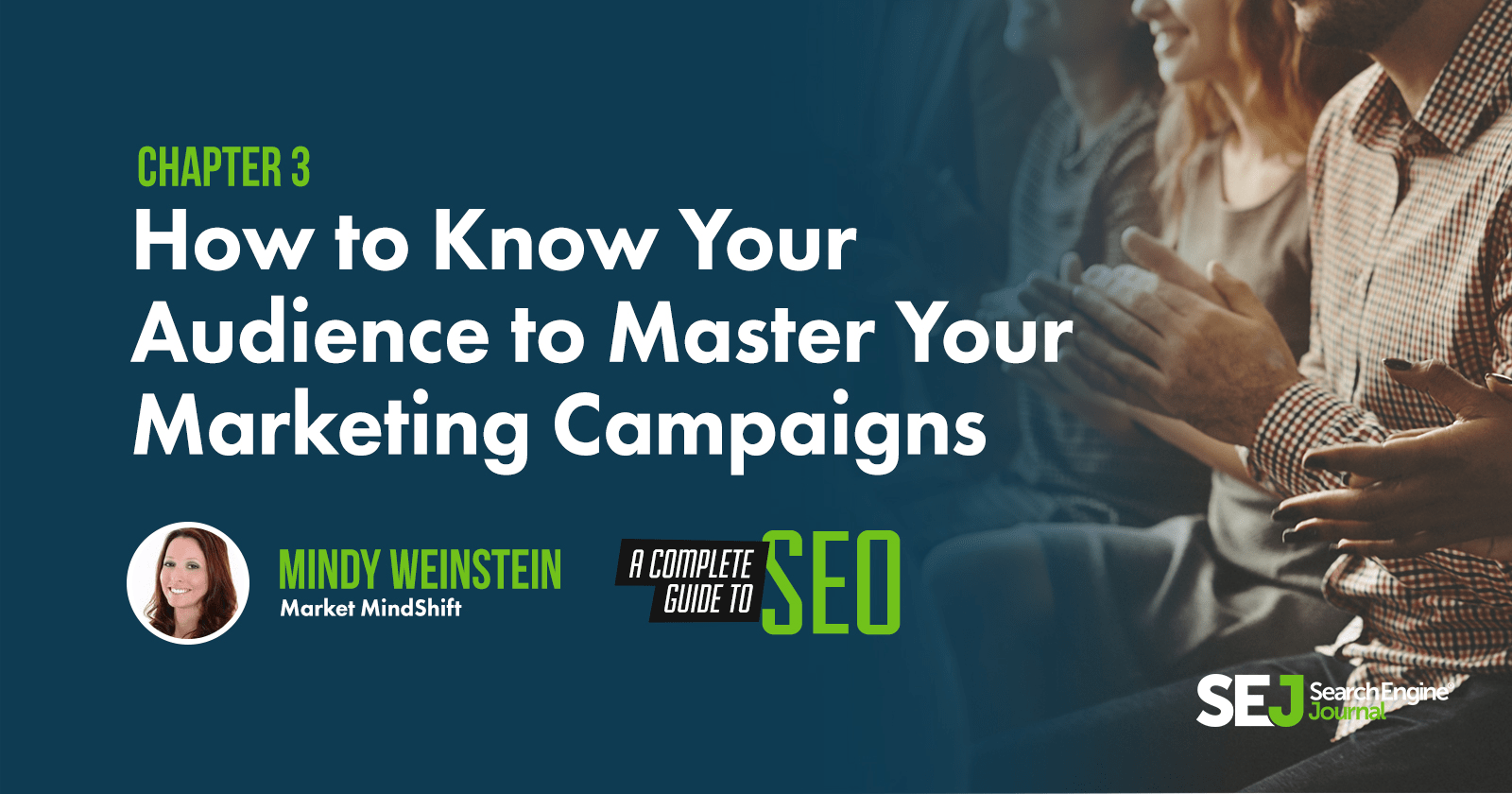Keywords. Conversion. User experience. Search engine optimization.
What do all of these words and phrases have in common?
They all relate to how you will attract, engage, and convert your target audience.
The crux of any good digital marketing campaign is to identify the specific characteristics of your ideal customers, including geographic, demographic, and psychographic variables.
The more you know about your audience, the more powerful your digital marketing efforts will become.
At some point, whether it was in a Marketing 101 course you took or from self-learning, you’ve probably heard that getting to know your audience is incredibly important.
What this really means: it isn’t enough to know the demographics and location of your prospects. You have to know as much as possible about them, including their:
- Personality traits.
- Interests.
- Values.
- Opinions.
Knowing all of this will help you:
- Come up with an accurate list of topics and keywords to target.
- Set up your pages to convert more effectively.
- Create a great user experience.
- Optimize your content.
- Craft the perfect message to cause your readers to take action.
- Find key influencers in your market.
Below is a step-by-step approach you can use to get to know your audience, which will, in turn, help you create a successful digital marketing campaign and turn you into a marketing rock star.
Step 1: Conduct Market Research
When you want to know more about your target audience, you need to conduct good old-fashioned market research.
The goal of market research is to get as many details as possible about the group you’re targeting, which you can later use to build personas.
There are many ways you can gather this information, including the following five methods.
Reach Out to Other Departments
Many times, we work in silos, meaning we stick within our own team or department and don’t reach out to anyone outside of our group.
When you are in digital marketing, you need to take advantage of the wealth of information that exists among other departments.
For example, the sales team will know the types of questions that prospects ask and will also know their interests and desires.
If your company has a customer service team, they will be able to provide insight into the words customers use (i.e. possible keywords for SEO) and what concerns are commonly brought up.
Even if your company isn’t that large, there are still people on the frontlines who are fielding questions and comments both from prospects and customers. Take the time to sit down with them and ask them questions about your target audience.
Gather Data Using Tools
Plenty of tools can help you gather data about your target audience. These tools range in price, but can provide assist you in building a foundation of information, ranging from basic demographic data to specific habits and interests.
Two of my favorite tools are:
- YouGov: The free version will give you a nice sketch of your target persona, which is pulled from a database of more than 200,000 consumers in the U.S. To get the right data, you need to identify a brand, activity, book, movie, celebrity, etc. that you know aligns with your audience. Type the information into YouGov.com’s search box and you will see something like the following:

- Demographics Pro: This tool will analyze Twitter and Instagram profiles to give you insight into the followers. If your company doesn’t have a large following, you can analyze your competitor’s profiles. You can glean a ton of great data for your personas after analyzing a profile, as seen here:

Research Social Networks
If you ever wanted to read your customers’ minds, social media is the closest you will get.
This concept is known as social listening. It consists of monitoring the various social networks to discover what is being said about your brand, your competitors, and topics relevant to your business.
You can even identify trends in your audience’s interests and problems.
Also, you can determine what social networks your target audience is the most active on, as well as the influencers in that space.
Instead of asking your audience questions, you can listen to their social conversations and determine what type of content will be the most valuable and relevant to them.
Create a Quantitative Survey
You will need to gather more information about your audience than general demographics. However, that doesn’t mean you are going to dismiss demographics, such as age, gender, income level, education, employment, etc.
To gather this information fairly quick, you can take a quantitative approach. This research method is ideal for surveying a large population of interest, such as your existing customer base or potential market.
The easiest way to go about this research is to use an online survey. The data is then quantified, giving you statistical results about your population.
You will be able to see general characteristics about your target audience.
This approach won’t give you specific insight into individual experiences. Instead, it reflects trends and commonalities among your audience. Tip: SurveyMonkey is a great surveying tool.
Conduct Interviews
Interviews are considered a qualitative research method, which delves into motivations, thoughts, and even opinions. It is a way to get to know your audience on a more personal level.
Because interviews are a time-consuming process, the population you research will be smaller. Generally, you will aim for 10 to 20 interviews.
One of the simplest ways to go about qualitative research is to conduct interviews with several existing customers and prospects. The questions should be prepared in advance and designed in such a way that they reveal the respondent’s:
- Personality traits.
- Buying preferences.
- Interests.
- Motivations.
The interview itself should be treated as a conversation. There should be a lot of listening on your end.
Be careful not to put words into the respondent’s mouth. Instead, take the time to allow the person to get deep into his or her thoughts.
One tactical piece of advice: ask permission to record the conversation. Doing so will ensure you don’t miss important insights. It will also allow you to capture the exact words used.
If you truly listen to these interviews, you will discover a wealth of information that you can use to successfully market and sell to your potential customers.
Step 2: Build Your Personas
Now that you have collected detailed information about your target audience, you can start to build buyer personas.
Marketers who use personas achieve 73 percent higher conversions, according to Aberdeen Research.
A persona isn’t a simple buyer profile. A buyer persona is a representation of your ideal customer, based on market research and actual data about your existing customer base.
Step one helps you put together this information to discover your target customers’ demographics, motivations, interests, and behaviors.
Personas offer a voice from your ideal target customers that tie right back to your digital marketing efforts.
Think of and refer to your personas as real people instead of an abstract audience. That will help you engage in genuine conversations with your current and potential customers.
Below are some tips to help you build personas for your digital marketing campaign.
Identify All the Personas You’re Targeting
After conducting your market research, there is a strong chance you identified more than one buyer persona. That’s OK. In fact, it’s pretty common.
All of these personas should describe different target customers. You will tailor your content and SEO efforts to connect with each of these customer segments.
For example, if you identified millennials as one of your buyer personas, you will develop a content marketing strategy that speaks directly to them. You will also consider what words they use and the websites they frequent.
Write a Detailed Description of Each Persona
It isn’t enough to jot down a “type” of a persona you have identified. Instead, you want to describe, in detail, each one.
You would include basic demographic data, but also other pertinent information, such as the person’s:
- Interests.
- Pain points.
- Priorities.
- Goals.
- Concerns.
- Personality traits.
Be very detailed in your persona description. Include real quotes for your personas, which should be taken from the interviews you conducted during your market research.
You might consider including a picture of your persona and even a name or archetype, such as Frugal Freddy, Motivated Mary, etc.
If you need a little guidance in describing these personas, there are plenty of free persona building templates out there, including HubSpot’s MakeMyPersona.
Put Personas Into Action
Once you create personas, you should regularly refer back to them when you are working on any facet of digital marketing, including SEO, content development, and social media marketing.
For instance, if you are thinking about redesigning your website, creating a social media strategy, or targeting new keywords, refer to your personas.
View them as your real customers and focus on how you can best connect with them. You should also map your content to the various personas you identified.
Step 3: Identify Influencers of Your Target Audience
Once you’ve done your market research and defined your personas, it’s time to consider the influencers who can help you grow your brand’s visibility.
You need to identify the people who have a direct influence on your target audience. These are the people who can significantly impact your customer’s purchasing decision.
While influencers can include celebrities, journalists, and even industry analysts, the focus here is on social influencers. These individuals are the ones who have built a substantial social following and engage with their audience on a regular basis.
Social influencers are going to be different in each market.
For example, if you are trying to reach young mothers, you might want to find and reach out to a popular mom blogger. Or, if you are trying to reach teenagers, look at popular Snapchat celebrities or YouTubers.
Unsure who is an influencer in your market? You can use tools such as BuzzSumo or Followerwonk.
When you are looking for one of these influencers, consider the following.
- Pay attention to engagement: The number of social followers is a metric to view when considering an influencer, but just as important (if not more) is the level of engagement. You want to work with an influencer who has a high engagement with followers. Social influencer Zach King is a great example. King has more than 21 million followers on Instagram and 2.3 million subscribers on YouTube. In an interview, he talked about the importance of an engaged audience and a strong collaboration between the brand and influencer.
- Make sure the influencer likes your brand: You want the influencer to be a genuine brand advocate. This genuineness will come through in his or her messaging. Consumers are savvy and can often identify when an influencer is truly a fan of a brand. Trying to fool consumers has the potential to hurt your brand image.
- Know how much the influencer is worth: When you involve an influencer, expect to pay money. According to GroupHigh, 85 percent of influencers accept monetary compensation for posts. GroupHigh also revealed that 70 percent of influencers would rather have monetary compensation per post than ads on their blogs, affiliate partnerships or product trade. Keep in mind that the FTC requires you to signal to consumers if a post is sponsored. Make sure you are abiding by the law. GroupHigh reported that even when a post is labeled with “sponsored” or “paid,” it doesn’t affect how much the consumer trusts the influencer’s brand recommendation.
Reach Out to Influencers
When you determine the influencer(s) who are relevant to your target audience, you can start your outreach.
Take the time to get to know the influencer, just like you would take the time to get to know your target customer.
Read or view his or her posts and get a feel for what is important to the influencer. Tailor your message to each particular influencer, but at the same time, be sure to clearly communicate your brand objectives and deliverables.
You should also explain your expectations. As mentioned in the previous section, you will likely need to compensate the influencer, so start that conversation right away.
Final Advice
The majority of the information shared up to this point has to do with marketing.
You have to apply tried and true marketing principles to have a great SEO or digital marketing campaign.
While some of these principles have evolved over time, what hasn’t changed is that you are still marketing to people.
It is trendy to talk about the evolving consumer, but a good marketer should also be focused on what has remained unchanged: human instincts, motivations, desires, and needs.
The more you know about your audience, including your target customers and key influencers, the greater success you will achieve through your digital marketing.
Image Credits
Featured Image: Paulo Bobita
All screenshots taken by author, June 2018




